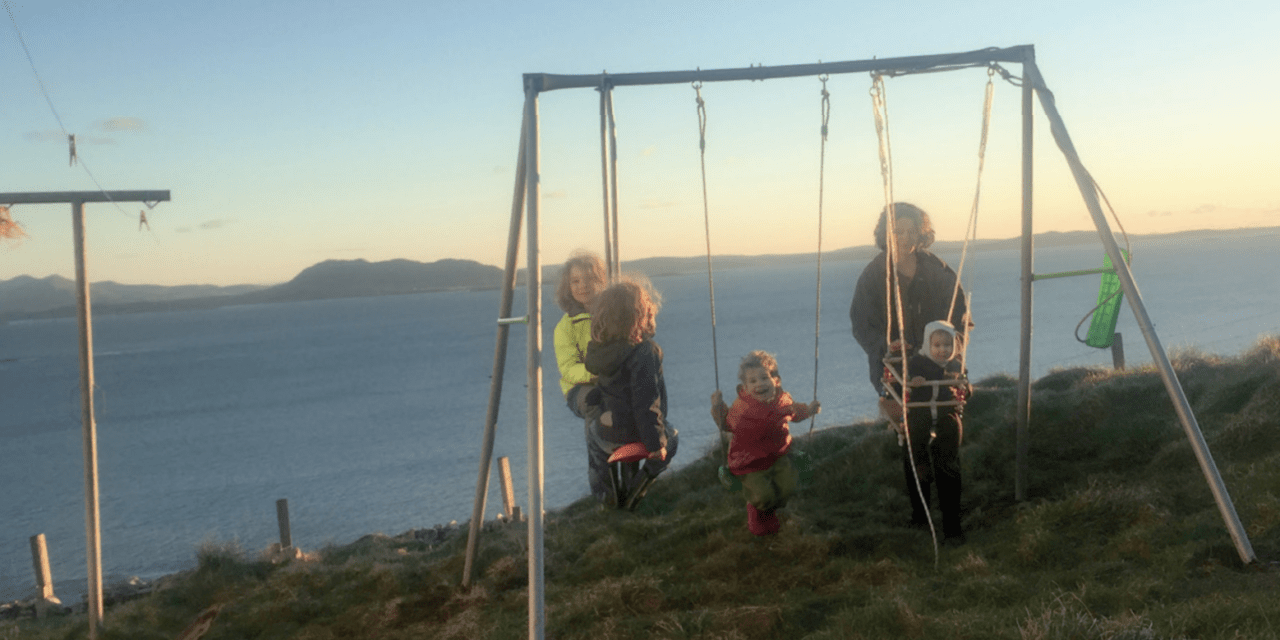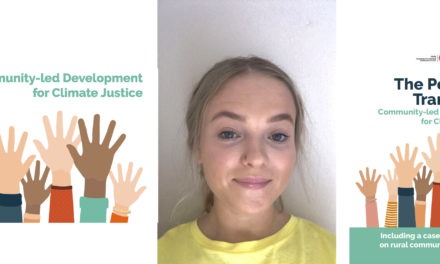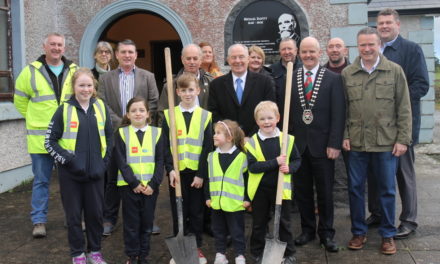Remote working in the extreme: From Germany to Inishturk, Co. Mayo
Back in 2019 Irena Meilick and her husband Bruno decided to move from Germany to the Irish countryside because they are nature lovers.
The couple had three young children at the time and were looking for somewhere to settle by the sea, “with fresh air and nature around us,” she says.
Her husband is a web programmer so he can work from anywhere. Ms. Meilick started looking on Daft.ie and one day she spotted a small house to rent on Inishturk, she says.
Within weeks they viewed it and “instantly fell in love with the little house,” she says. “It has very nice views.”
They moved in with just the belongings they had brought in their backpacks and didn’t go back to Germany to get the rest of their stuff for a year, she says.
Island life is everything they dreamed it would be and more. “We love it, it’s even better than we thought it would be,” she says.
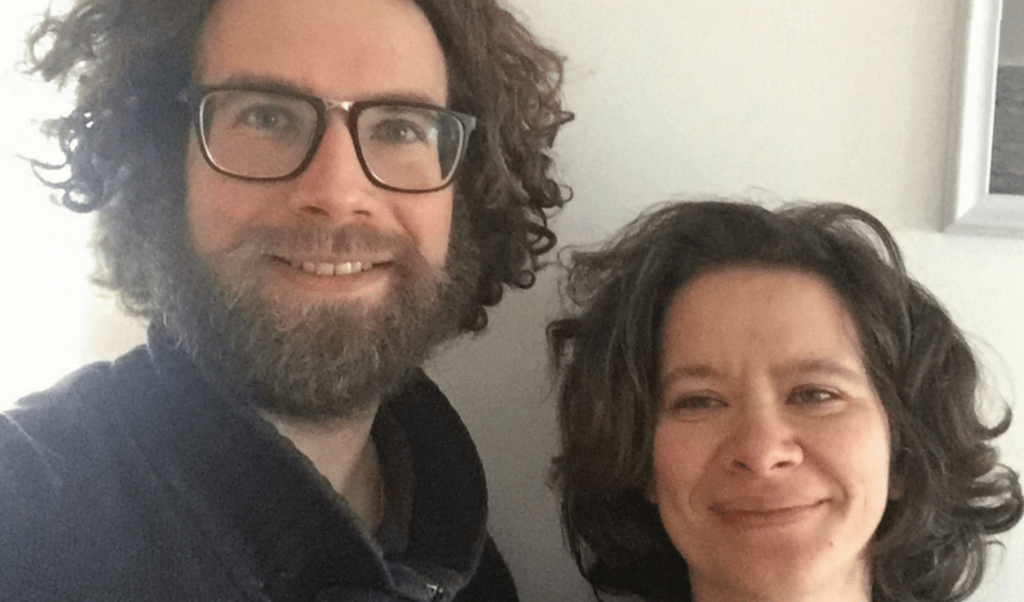
• Bruno and Irena Meilick and family found life on Inishturk “even better than we thought it would be”.
They never imagined that the small community would be so welcoming to them. “It is such a community,” she says. “They were so welcoming from the beginning.”
Remote Working
Since the pandemic struck, the increase in remote working has presented a glimmer of hope to young islanders from Inishturk and people who dreamed of moving home to enjoy island life have found a way.
Unemployment and emigration have always been high on the list of challenges faced by Ireland’s offshore islands, says Mary O’Toole, co-ordinator of Inishturk Development Company.
But, increasingly companies are open to employing people to work remotely. Advances in technology could open up a wide variety of jobs and slow the flow of young people to the mainland and beyond, to look for work.
“We are looking at developing a digital hub on the island,” says Ms O’Toole. “Which will not only ensure connectivity with the excellent broadband we have – but will see the return of islanders hopefully.”
While islanders face challenges of employment and construction costs, they are benefiting from improved amenities too, she says.
Máire Ui Mhaoláin, CEO of Comhar na nOileán, says that there are plans for digital hubs in many islands and remote working is improving the range of employment available to islanders across the offshore islands.
Ms. Meilick says her husband is remote working as a self-employed web programmer and has no issues with the internet.
She has started working in the community garden and helps out in the shop and the restaurant too, she says.
Changes on Inishturk
Around 18 years ago Changing Ireland reported that people living on Inishturk had to travel to the mainland for a haircut.
That is still the case, says Ms O’Toole, but there are more regular sailings nowadays.
An extension to the pier in 2006 means that the boat now runs in all weather, she says. There is a daily service from Roonagh and a service from Cleggan twice a week.
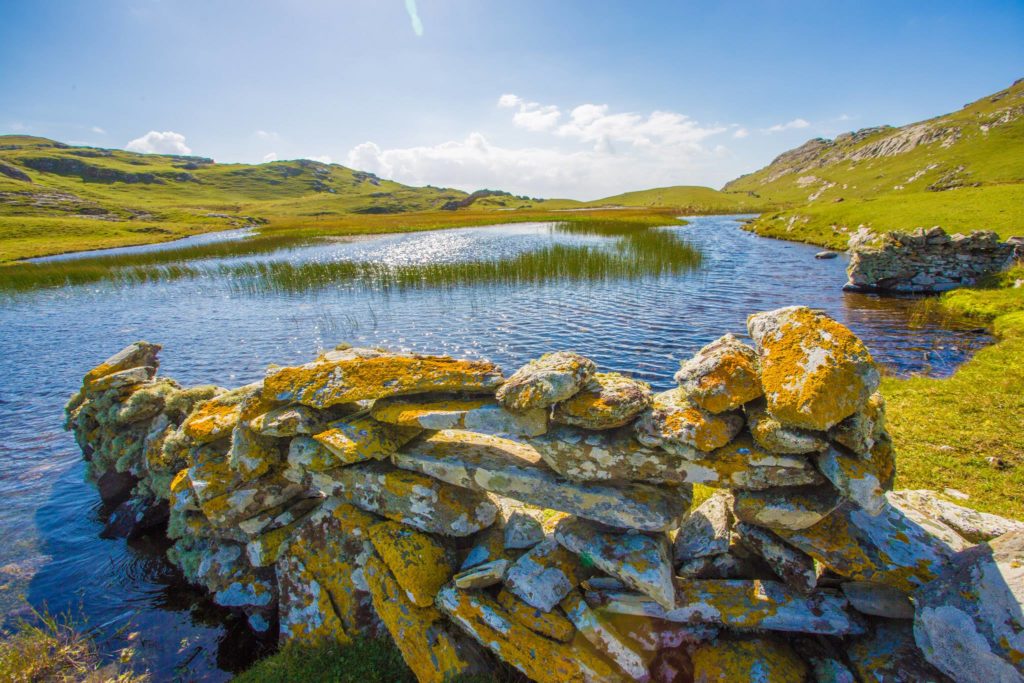
• Inishturk Island. Source: Inishturk Facebook page.
“We have advanced a lot in the last 18 years,” she says.
In 2003, Inishturk got a new health centre and they have a nurse available there full time and a GP visits once every three weeks, says Ms O’Toole.
If the doctor’s visit is urgent people travel to the mainland, she says.
The coast guard and the RNLI provide back up to the nurse and have been assisting with the vaccination programme, “The service of the coast guard and the RNLI has been just absolutely amazing,” she says.
Restaurant
An extension to the community club, which now includes a restaurant and function room, has opened up the possibility of going out for a meal.
“The restaurant is a massive addition,” she says. It is open seasonally and is well used by locals.
The sports pitch was upgraded in 2010, and dressing rooms built in 2012. That has allowed Inishturk to host matches and clubs have travelled from the mainland to play.
Building a Sustainable Future
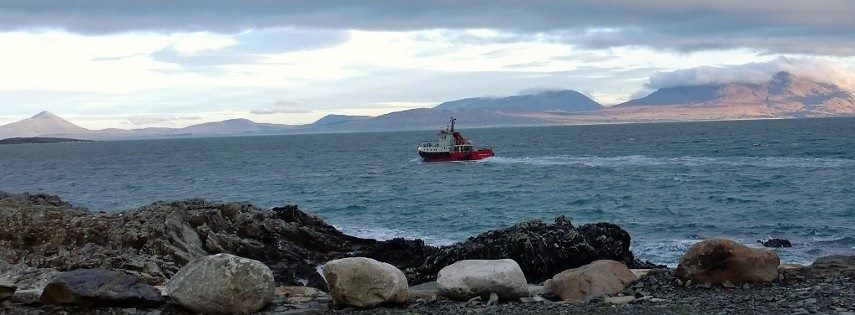
• Inishturk by boat. Source: Inishturk Facebook page.
The population of the Inishturk is 62 and there are just five children in the primary school.
“We have a wonderful, vibrant school with two teachers, says Ms. O’ Toole. “The children get plenty of special attention.”
The primary school got a boost when Ms Meilick’s family and another family also from Germany, moved to the island.
Ms. Meilick’s eldest child, aged 9, is in the local school. “The school is such a nice place, the teacher is great,”she say. “He has the smallest class ever.”
She is homeschooling her 7-year-old for now. One of the things that attracted the couple to Ireland was being able to let their children choose between going to school.
Homeschooling is very complicated in Germany, she says.
Secondary students travel to the mainland and board during the week, says Ms O’Toole. “That is all part and parcel of island life. We are still dealing with population decline which is ongoing for any rural community.”
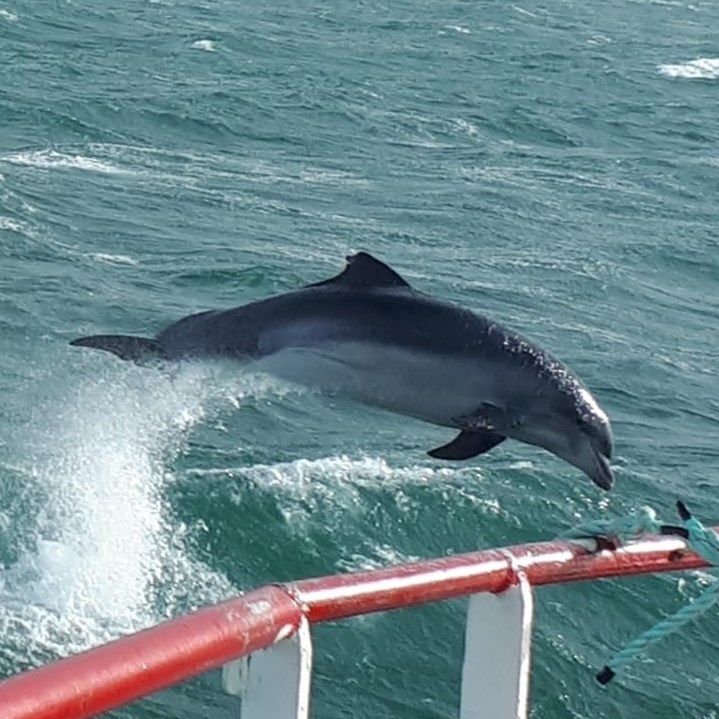
• A friendly visitor to Inishturk. Source: Inishturk Facebook page.
There is some employment on the island including farming and fishing, she says. And publicly funded jobs too – like herself and her colleagues, the teachers and the nurse.
There is work too in tourism, which is seasonal, yet many young people still have to go to the mainland for work.
With plans for a digital hub on the island though that could be set to change, offering hope to islanders that wasn’t there before.
Since Covid-19 restrictions kicked in four islanders have come home. They are working remotely for companies based in Denmark, the UK and two on the mainland, she says.
“This is a massive shift in the right direction. It is our goal to increase this number and capitalise on this opportunity,” says Ms O’Toole.
Companies are finding that “remote working is working,” she says.
Those islanders who have come home are benefitting from the change in approach. “They are content doing it and they are happy to be home while still working away.”
Getting the digital hub up and running as soon as possible is a key priority for the sustainability of Inishturk, she says.
Another major issue is construction costs, it can be around 30 percent more expensive to build a house on the island. Materials have to be shipped out and tradesmen have to be accommodated in B&Bs too.
She says that if both of those issues could be tackled, it would make it easier for people to move to Inishturk and for young people to stay living on the island too.
“Sustaining the population and ensuring that Inishturk has a bright and vibrant future for many years to come,” says Ms. O’Toole.
“Of course we would love to see more families here,” says Ms Meilick, “it is so important for the community.”
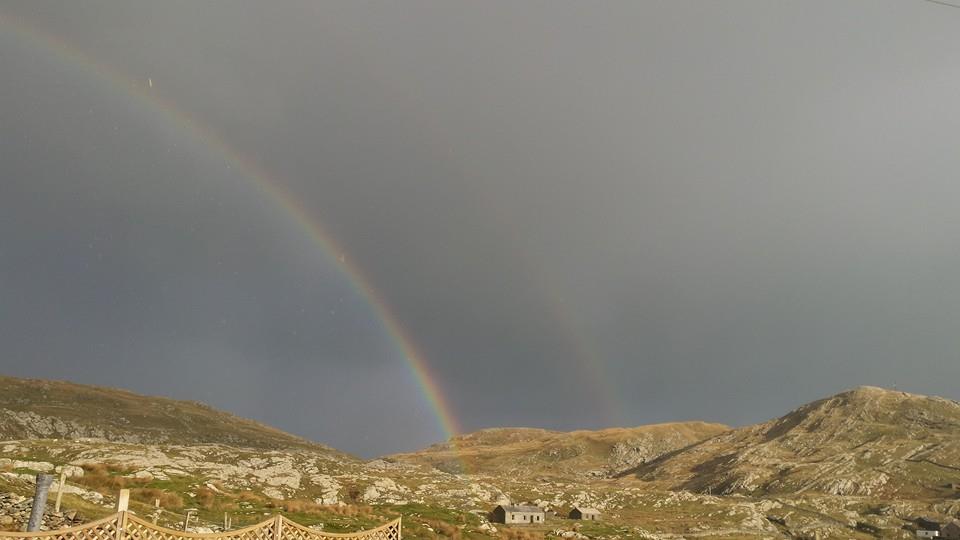
• A rainbow sighting on the island. Source: Inishturk Facebook Page.
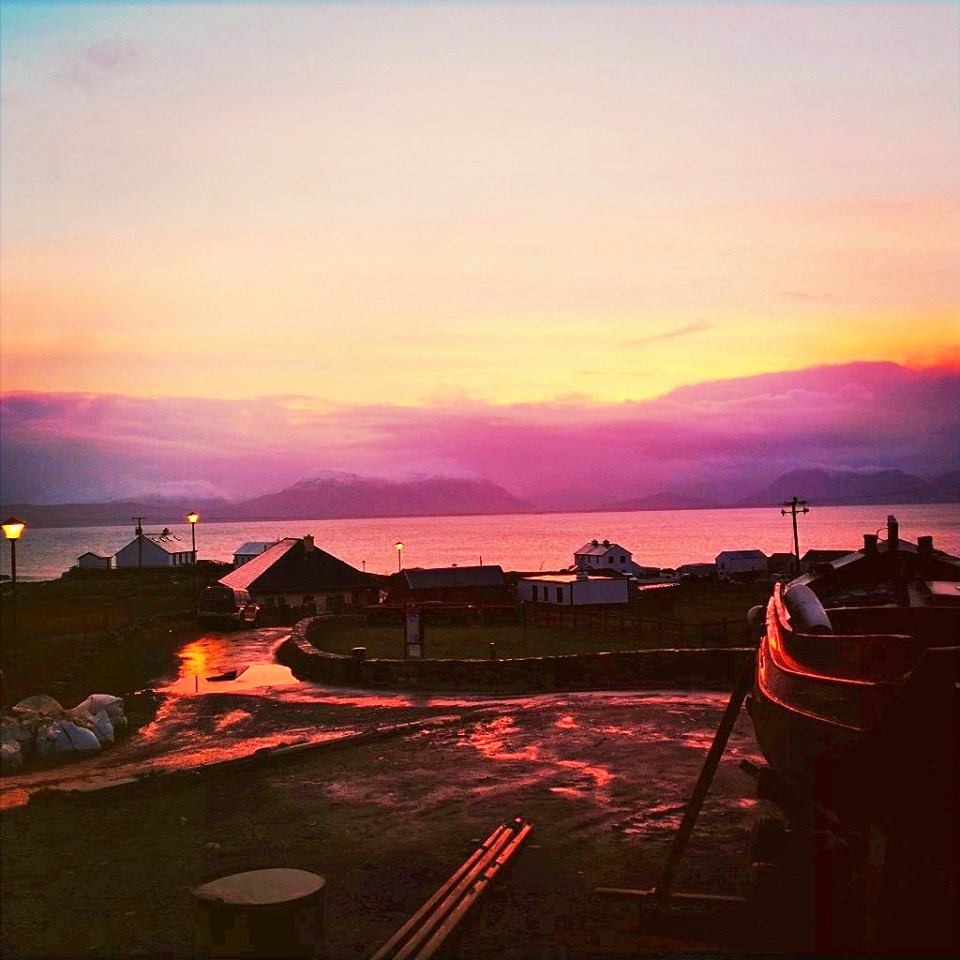
• Sunset on the island. Source: Inishturk Facebook page.

